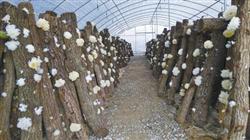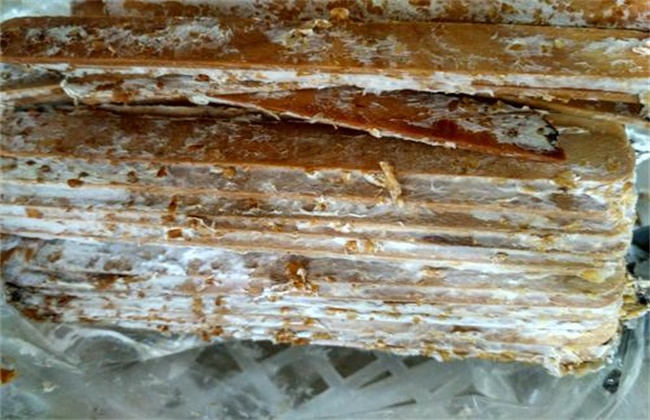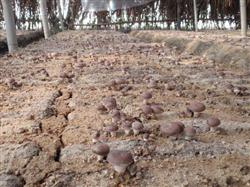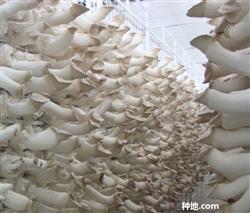mycelium Learn more about mycelium
-
How to produce the strain of Tremella fuciformis

The producing areas of Duan Tremella are Tongjiang, Sichuan, Gutian, Fujian, Changbai Mountain in Northeast China and Huangshan Mountain in old Huizhou. The traditional method of planting white fungus is to plant Tremella fuciformis in the wild from March to April, connect it to the cut-down section of raw wood, raise bacteria for 80 to 90 days, and grow out of the ear from July to August. The growth of Tremella.
2018-09-10 -
Key points of management of mycelium growth period of Lentinus edodes

Management points of Lentinus edodes mycelium growth period the suitable conditions for Lentinus edodes mycelium growth are temperature 22 ℃ ~ 26 ℃, air humidity 60% ~ 65%, good ventilation, dark or weak light. 1-6 days after inoculation, it was the period of mycelium germination and colonization. Because the mycelium grew weakly, the bag temperature was 1 ℃ ~ 3 ℃ lower than the room temperature. In order to provide the suitable temperature for the mycelium, the room temperature should be adjusted to 28 ℃ ~ 29 ℃. The room temperature, stack temperature and bag temperature should be measured every day. At this time, it is not appropriate to move the bacterial bag to prevent miscellaneous bacterial infection.
2019-01-16 -
Causes of mycelium growth of Lentinus edodes and its control methods

Causes of mycelium growth of Lentinus edodes and its control methods
2018-08-09 -
The causes and control methods of the latest mycelium growth of Lentinus edodes

Lentinus edodes is an important edible strain, which has strong edible and medicinal value. Lentinus edodes is cultivated in various areas of our country, but many people will have the phenomenon of excessive mycelium growth during cultivation, which affects the formation of fruiting body. So what is the reason for the growth of hyphae? What should I do?
2020-11-10 The latest Lentinus edodes mycelium apprentice growth causes and control methods -
Identification methods of original and cultivated species of Edible Fungi

The mycelium of Lentinus edodes is white, stout, stretched and uniform, with neat edges and fast growth; it develops in the shape of fan feathers in the bottle wall, grows sturdily and secretes soy sauce-colored water droplets. After the mycelium grows full, the amber transparent liquid is often seen within 10-15 days, and it has the unique fragrant smell of Lentinus edodes, no odor and mildew smell. If the mycelium column in the bottle is separated from the bottle wall, it shows that the culture material is caused by too much water; if it is separated, the mycelium column begins to shrink again, and the surface mycelium skin thickens and turns dark brown, indicating that the strain has begun to age and cannot
2019-01-16 -
What if the mycelium weakens and disappears? prevention and treatment of mycelium degeneration of Auricularia auricula

What if the mycelium weakens and disappears? prevention and treatment of mycelium degeneration of Auricularia auricula
2018-07-11 -
Causes and control methods of mycelium atrophy of mushroom

The cultivation method of mushroom is not difficult, but every step must be strict. Once there are omissions, it is easy to appear miscellaneous bacteria, diseases and even mycelium shrinkage, which is fatal to mushrooms and will affect the harvest of growers. So we
2020-11-08 Mushrooms hyphae atrophy causes and control methods mushrooms -
Causes and Control methods of mycelium shrinkage of Edible Fungi

Causes and Control methods of mycelium shrinkage of Edible Fungi
2020-03-04 -
How to manage the mycelium growth period of Lentinus edodes

This paper introduces the construction method of outdoor bacterial culture greenhouse with three rows of columns with moderate and high popularization rate, which contains 10000 Lentinus edodes bags and 13000 bags. First, the site selection requires flat terrain, low groundwater level, convenient transportation and close water source. Second, the main materials used in the outdoor culture shed are wooden piles and bamboo poles.
2018-09-09 -
Causes and control methods of mycelium atrophy of the latest edible fungi

Now the cultivation technology of edible mushroom is not difficult, but every step must be strict, there must be omissions, there will be miscellaneous bacteria, diseases and mycelium shrinkage, which is extremely fatal to the cultivation of edible mushroom, seriously affecting the economic income of growers. that
2020-11-10 The latest edible fungi hyphae atrophy causes and control methods -
Comparative experiment on liquid strain substitute cultivation of six strains of Lentinus edodes

In recent years, the production of Lentinus edodes in China has developed rapidly, especially the substitute cultivation of Lentinus edodes. The traditional solid seed production technology of Lentinus edodes can be extended to the production of cultivation bags after the three-stage cultivation of mother seed, original seed and cultivated species. The development of Lentinus edodes is greatly restricted by its great labor intensity, complicated technology, high contamination rate of miscellaneous bacteria, long growth cycle and so on. In this experiment, six liquid strains of Lentinus edodes were cultured and cultivated, in order to provide a theoretical basis for the popularization and application of liquid strains of Lentinus edodes. 1 Materials and methods 1
2019-01-16 -
Necessary conditions for the growth and development of Lentinus edodes

1. Nutritious Lentinus edodes is a kind of higher wood rot fungus. The carbon source for its growth comes from lignin, cellulose, nitrogen source and inorganic salt, and is taken from wood bark or wheat bran (rice bran) added to sawdust medium. After Lentinus edodes was inoculated into Lentinus edodes, the culture material was decomposed into small molecular substances which could be absorbed and utilized by the mycelium of Lentinus edodes, and the mycelium biomass increased with the increase of culture time. When the culture material was fully degraded, the mycelium of Lentinus edodes accumulated a lot of nutrients, which laid the material foundation for the occurrence of fruiting body. In the appropriate strip
2019-01-16 -
Prevention and treatment of mycelium germination, yellowing and atrophy of edible fungi

Prevention and treatment of mycelium germination, yellowing and atrophy of edible fungi
2018-07-11 -
Control of Common physiological Diseases of Edible Fungi

1. After inoculation, the vegetative growth of edible fungi is too prosperous, and the villous hyphae grow densely. After covering the soil, they often "drill" out of the ground and form a fungal quilt. The occurrence of this situation is related to the characteristics of bacteria and environmental conditions. low water content in soil layer, high nitrogen content in culture materials, poor ventilation and excessive air humidity are easy to cause mycelium overgrowth and "false mycelium" phenomenon. Common prevention and control methods: select high-quality bacteria, pry loose and destroy the consolidated bacteria, cover fine soil, increase ventilation, reduce air relative humidity, and promote bacteria by spraying heavy water.
2019-01-15 -
What are the inoculation methods of Lentinus edodes

What are the inoculation methods of Lentinus edodes
2019-01-30 -
What are the latest inoculation methods for Lentinus edodes

Lentinus edodes is the second largest edible mushroom in the world, and it is also one of the unique edible fungi in China. Lentinus edodes is delicious and nutritious, and it is cultivated in various regions of our country. When cultivating Lentinus edodes, the first thing to do is to inoculate mycelium, so how to inoculate Lentinus edodes? Come together.
2020-11-10 The latest Lentinus edodes have which inoculation method yes the world -
Environmental conditions required for the growth of volvariella volvacea

1. Temperature: volvariella volvacea is a high-temperature type of umbrella bacteria. The temperature required for spore germination is 25-45 ℃, and the suitable temperature is 40 ℃. It can not germinate above 45 ℃ or below 25 ℃. The suitable temperature range for the mycelium growth of volvariella volvacea is 20-40 ℃, and the most suitable temperature for mycelium growth is 35-36 ℃. At this temperature, the mycelium grows fastest. Under the condition of less than 15 ℃ or more than 42 ℃, the mycelium grew slowly, stopped growing at 10 ℃, and died quickly below 5 ℃. The optimum temperature for fruiting body development is 2832 ℃.
2019-01-16 -
Introduction to the causes of excessive growth of mushroom mycelium and the key points of control techniques

The excessive growth of mushroom hyphae is a common phenomenon in mushroom cultivation, that is to say, mushroom hyphae consume a lot of nutrients in the culture medium, so the fruiting body can not keep up with the nutrition and can not form fruiting body, which is very harmful to the growth of mushroom. Next I
2020-11-08 Mushroom mycelium overgrowth cause and control technology key points introduction -
How to cultivate Pleurotus eryngii in North China

How to cultivate Pleurotus eryngii in the north? Please guide Pleurotuseryngii, also known as snow mushroom. Pleurotus eryngii is a kind of large fleshy umbrella fungus with good quality. Pleurotus eryngii has thick seedling meat, crisp and tender texture and delicious taste, which can be called the king of Pleurotus ostreatus. Rich in nutrition, high oligosaccharide content, has the effect of bowel cosmetology. ...
2018-07-19 -
Why does the mycelium produce mushrooms sporadically?

The normal situation is that after the mycelium has penetrated, it begins to produce mushrooms within a few days of recovery. But sometimes the mycelium only sends the fungus tube 2pg 3, or even lmax 2 appears the fruiting body, which is an abnormal phenomenon. Some advertise that their own strains are excellent "precocious and high-yielding strains", which is a lie. In fact, this situation is a manifestation of the degradation of bacteria. There are also external factors, such as: (1) the amount of bacteria used is too large, and the old strains produce mushrooms. (2) if the fashion is too tight, cultivate the bag.
2019-01-15
